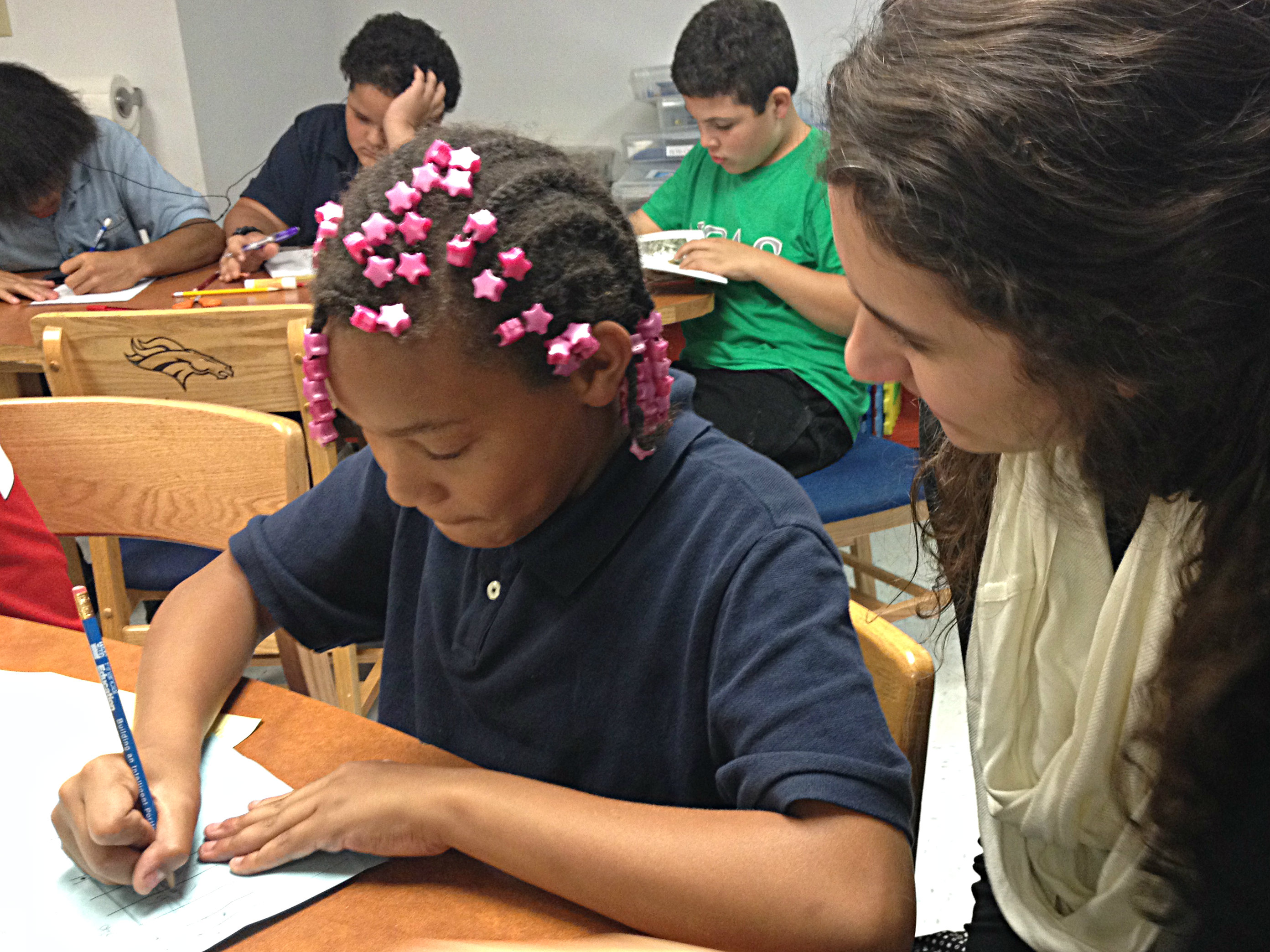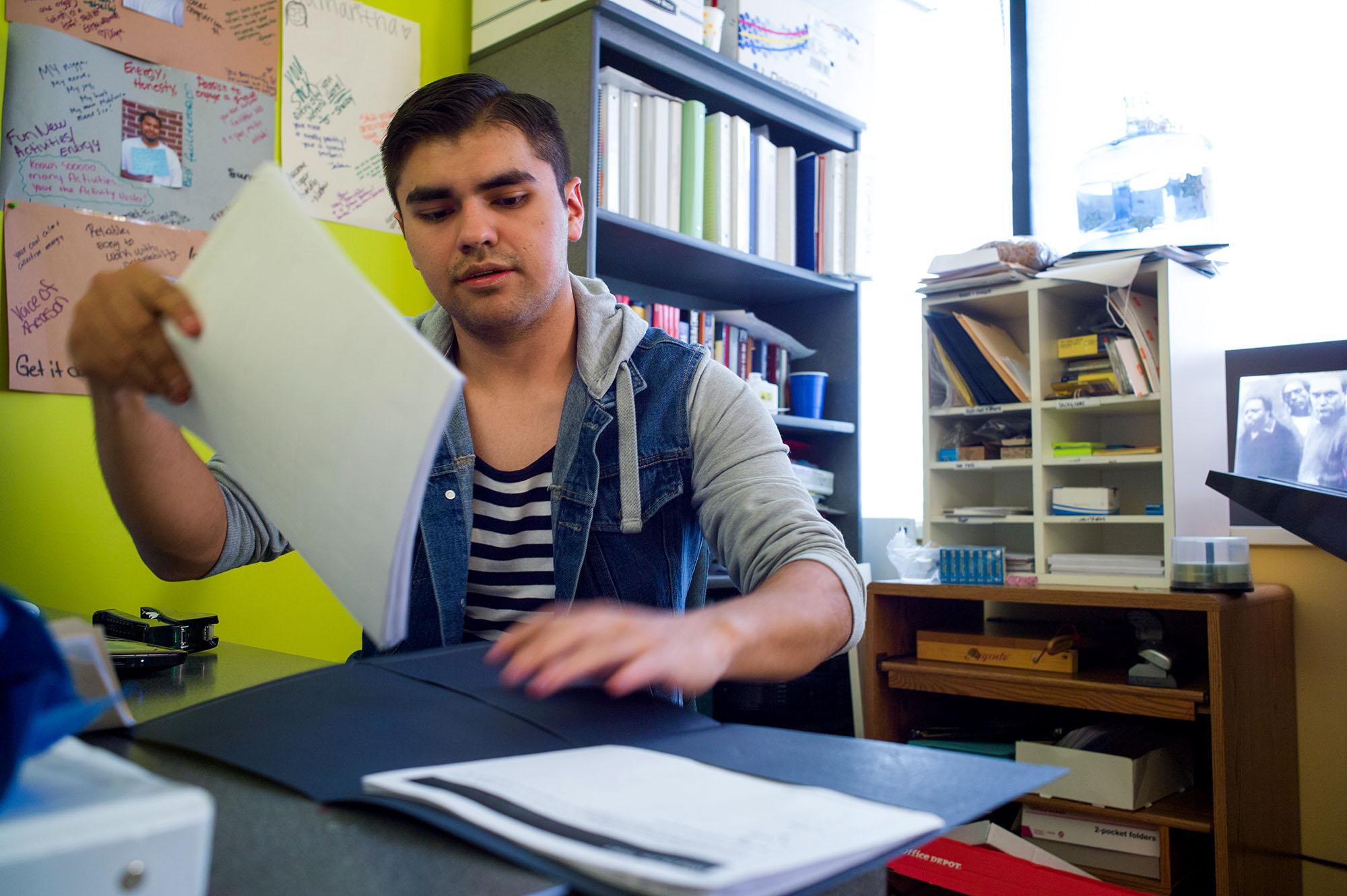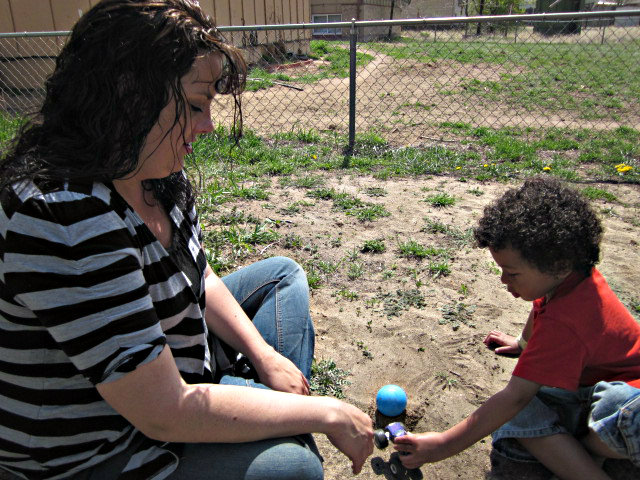
More than a year ago we saw one census statistic we just couldn't shake. At the time, nearly one in five kids in the state were living in poverty. We set out to learn about childhood poverty in Colorado: What it looked like and what was being done about it. We're looking back at our coverage now, taking stock of what we've learned and revisiting some of the people we interviewed.
Keep in mind that there are a substantial number of low-income children in Colorado schools. Forty-two percent of school children in Colorado are low-income. In Denver Public Schools, around 70 percent of students qualify for free and reduced-price lunch. And we know that the number of homeless students in Colorado has also spiked.
The Kids At The Crossing
The Crossing is a Denver Rescue Mission program that provides shelter, mentors and training in basic life skills. Mentors can help kids deal with truancy, health issues, drug and alcohol abuse, and interest in school, and programs like The Crossing give families a measure of stability and the tools to move forward.
In fiscal year 2014-2015, the Crossing served 212 families. In the reading and writing club, the kids logged 2,772 hours of homework. Thirty-eight students were matched with an adult mentors -- and we should say, the program is always in need of mentors.
The amount of stress these children manage on a daily basis is almost unbelievable. They are very aware of their parents’ worries around money. They know when the rent and bills are due and they try to shield their parents from the stress they feel.

"Sometimes I have to take a minute and go inside my room and start crying," said Gada, who was 9 years old when I spoke with her earlier this year. "Then I stop crying and then I go outside and have fun. And the stress is kind of hard."
These children try not to get attached to anyone because they know they’ll have to move soon. They feel a great deal of compassion for their parents. I also saw impressive strength and resilience in them because they’ve had to do so much on their own. They tend to focus on what they have, not what they don’t have.

"I really don’t see myself [as] poor because I’m very special and I’m the one who’s really working in class," 9-year-old James told me. "Sometimes I don’t get what I want because my mom doesn't have that much money. At least I get something like I get food and at least we get to stay somewhere."
How the kids are doing now:
I spoke with Alexxa Gagner with the Denver Rescue Mission about this. It’s very hard to track families in poverty or who are in crisis because phones are often disconnected and they are on the move so much.

One girl, Pinky, left the program and we don’t know where she is. James’ family is in transitional housing but the program doesn’t have contact with him anymore. Gada’s family is in a transitional apartment complex. Gada turned 10 and still shows up for the weekly reading and writing club.
"Success may look different for people, but as far as Gada is concerned, joining the theater or even coming back and participating in homework club, that’s great and that’s really positive and we wish we could keep in touch with everyone and it could be that easy," Gagner said. "It unfortunately isn’t. We just want to give these kids the skills and tools while they’re with us that we can and pour as much in to them that we’re able to while they’re with us."
The Teens In Project Voyce
Kids in poverty are also saddled with so many responsibilities, far beyond most kids their age: feeding and clothing their brothers and sisters, working to help pay the rent are common responsibilities. Project Voyce, a Denver non-profit, works with these kinds of kids in high school.
Chaunsae Dyson had to grow up fast:

"When I moved in with my grandma, she was like, ‘You know you have to pay for everything?' I said, ‘What is everything?' And she said, ‘Laundry detergent, food,' I need $80 a month to live here," Dyson said."When you’re growing up in poverty, when you’re 15 or 16, that means you are grown."
He’d take the bus after school to go to work at a pizza joint where he’d work until about 9 p.m. Then, he went home to do homework. So when we met Chaunsae, he was in a precarious situation at his grandmother’s house. He was trying to keep his grades up, work, and find time to fill out college applications.
How Chaunsae is doing now:
After our story aired, a listener who happens to tutor students gave Chaunsae a rent-free bedroom close to South High School. Chaunsae says it was a respite, and the listener and her husband were incredibly generous in helping him with college applications and outfitting his first dorm room.
Chaunsae now attends CU Boulder's Leeds School of Business. First, he had to go to an intensive three-week summer program – which he found grueling. On his first math test he got about 10 percent. But as the program progressed, he says he was scoring 85 percent on tests. That got him accepted into the business school.
At the time, his father helped support him but, "family things just don’t work out with me," he said. "Every time I’m taking a step forward in school, like family-wise, I always take a step back."
His father landed in jail, so that ended the little support he was receiving there. His mom is not in the picture. He has lots of scholarships, but that doesn't cover all his expenses. He has more than $5,000 in loans so far. He’s working 16 to 20 hours a week, including at a residence dining hall while he tries to get a higher paying job.
There are other adjustments, too.
"It is very Caucasian here," he said with a laugh.
South High, from which he graduated, had the most white people he’d ever been around. In Boulder, the demographic gap is even wider -- he sees students driving expensive German import cars, and there are a lot of kids from Denver's well-to-do suburbs.
"Here it is a whole different ball game," he said.
"It hit me like a brick wall about how different it was than South," Chaunsae added. "Even the friends I made, they consider struggling getting only $300 a month in allowance, that’s what they consider struggling."
The amount of hours he works can cut in on his time to study -- he has one D so far -- but he says he's doing OK. He'd prefer to be studying instead of working, but he’s part of the Diverse Scholars program where he gets free tutoring and mentoring. Still, his family troubles in Denver weigh heavily on him.
"For me, it is succeed or be homeless and I choose succeeding because I’m not going to be homeless," he said. "Outside of school no one really knows I’m homeless. All my clothes and stuff are in a car in Denver."
He wants to stay in school but he’s taking it one day at a time.
Luis Robles works at Project Voyce:

Luis Robles’ life started off almost idyllic. The Denver teen was born in a small town in northern Mexico where his father had an estate -- a hacienda -- with a farm and dairy. There were cows and chickens and his dad would make cheese and yogurt. But drug traffickers tried to extort his dad, and rather than going along, he moved the family north.
Luis didn't discover he was undocumented until he was a teenager applying for scholarships.
How Luis is doing now:
Luis works part-time at Project Voyce now. Things are still tight for him money-wise.
"I’m not doing the best, but I’m doing much better. I’m working a lot more. And I just got promoted so I got a raise," the 19-year-old said. "My Dad also got a promotion, so he’s getting a lot more money, a lot more hours. My brother, he’s working with my dad now, so we’re getting double the income in our family."
When we met Luis a year ago, his dream was to go to a four-year college and become a physical therapist. Because of his legal status he couldn’t qualify for many scholarships and he was uncertain about the future. So he’s re-evaluated and now is in his second year of community college.
Luis is aiming for a certificate as a physical therapist’s assistant and to then transfer to a four-year college. There, he says he'd work towards a broad-based degree that would let him work in a non-profit like Project Voyce.
He still dreams of Regis University’s physical therapy program for graduate school. But working many hours and going to school full-time and doing volunteer work takes its toll.
His home life is another challenge. Luis’ sister – while working at a restaurant - was held up at gun point, so she dealt with some trauma. And after five years on dialysis, she's finally on the list for a kidney donor. The family has raised $7,000 of the $10,000 they need for that.
Luis helped raise his brother’s children when he was a teenager, and his family is trying to help Luis’ brother in his custody issues. The mother of his brother’s children, who has since been in two abusive relationships, spontaneously dumps the kids off at Luis’ house.
Chronic Stress And Kids In Poverty
I did several stories on the growing scientific evidence that chronic stress associated with poverty and other adverse childhood experiences – sometimes called ACES --- can change a child’s brain. ACES are things like divorce, abuse, neglect, a caregiver who abuses drugs or alcohol, homelessness, or seeing domestic violence, among other factors. The evidence shows that the stress created by these situations can be toxic, and affect a child’s ability to learn and to regulate emotions throughout their lives.
Katrina Haselgren's experience:

 Haselgren has four sons. She is someone who would have had a very high ACE score as a child because she was exposed to a lot of violence and chaos, and never felt safe. Until recently, "I would lash out and I would beg for help. I needed someone to advocate for me. I didn’t think I had a voice at the age of 12, 13," she said. "I was always told to be quiet: don’t say nothin’.
Haselgren has four sons. She is someone who would have had a very high ACE score as a child because she was exposed to a lot of violence and chaos, and never felt safe. Until recently, "I would lash out and I would beg for help. I needed someone to advocate for me. I didn’t think I had a voice at the age of 12, 13," she said. "I was always told to be quiet: don’t say nothin’.
If a child doesn’t feel safe, matters like problem solving, the ability to regulate one's behavior, or develop memory and attention, are put on the back burner. Katrina believes her experiences damaged her decision-making; she landed in an abusive relationship and has faced many obstacles.
One study shows that of the children who had an ACE score of zero – that’s no adverse experiences -- only 3 percent had learning and behavior problems. For kids who had an ACE score of four or more, 51 percent of them had learning and behavior problems in school.
How a University of Denver study helped:

 Haselgren realized the way she was interacting with her kids was similar to how her parents interacted with her. She was part of the stress her kids faced. So as part of the study, she learned new ways to interact with her children – new strategies and techniques.
Haselgren realized the way she was interacting with her kids was similar to how her parents interacted with her. She was part of the stress her kids faced. So as part of the study, she learned new ways to interact with her children – new strategies and techniques.
"That experience changed my life," she said. "I will never forget the strategies that I learned from that program."
Her relationship with her sons improved, but the family lost their home after their landlord decided to sell their house.
How the family's doing now:
Six months later the family is doing well. They’re renting a new house and her boys -- now 12, 10, 8, and 4 years old -- are making friends in a new neighborhood. When they moved they had to leave behind a table – they call it the "peace" table -- where the boys and mom would sit around to calmly discuss problems that arose. But they’ve found a new one, with some additions.
"We have candles, where it's relaxing and we can talk about the problems that we’re facing and come up with different ideas to help each other," she said. "The peace table makes us feel like we can tell each other anything and some things that they tell me are kind of stressful and can be overwhelming for a single mom like myself."
Among the new challenges: Some of the boys are now interested in girls, and Haselgren’s trying to get them refocused on school. She’s also noticed electronics are also a big distraction and change the mood of the household. So Haselgren did what many parents wish they had the strength to do – she banned electronics for two weeks before Thanksgiving.
Finances are still very tight. There is no money for Christmas gifts this year and Haselgren has had her share of health problems. She is 30 years old, and just had to have a stint placed in her heart to help avert migraines and mini-strokes. The operation triggered another stroke, but she is doing OK now.
"Every time I think that it’s getting back to normal then something else happens – just taking it one day at a time and knowing there’s light at the end of the tunnel somewhere," she said.
That is a theme that we hear over and over again in stories of poverty. Everything may be going well, and then – boom – there are often other health issues or related things that are hard to control. They learn to live with uncertainty.








